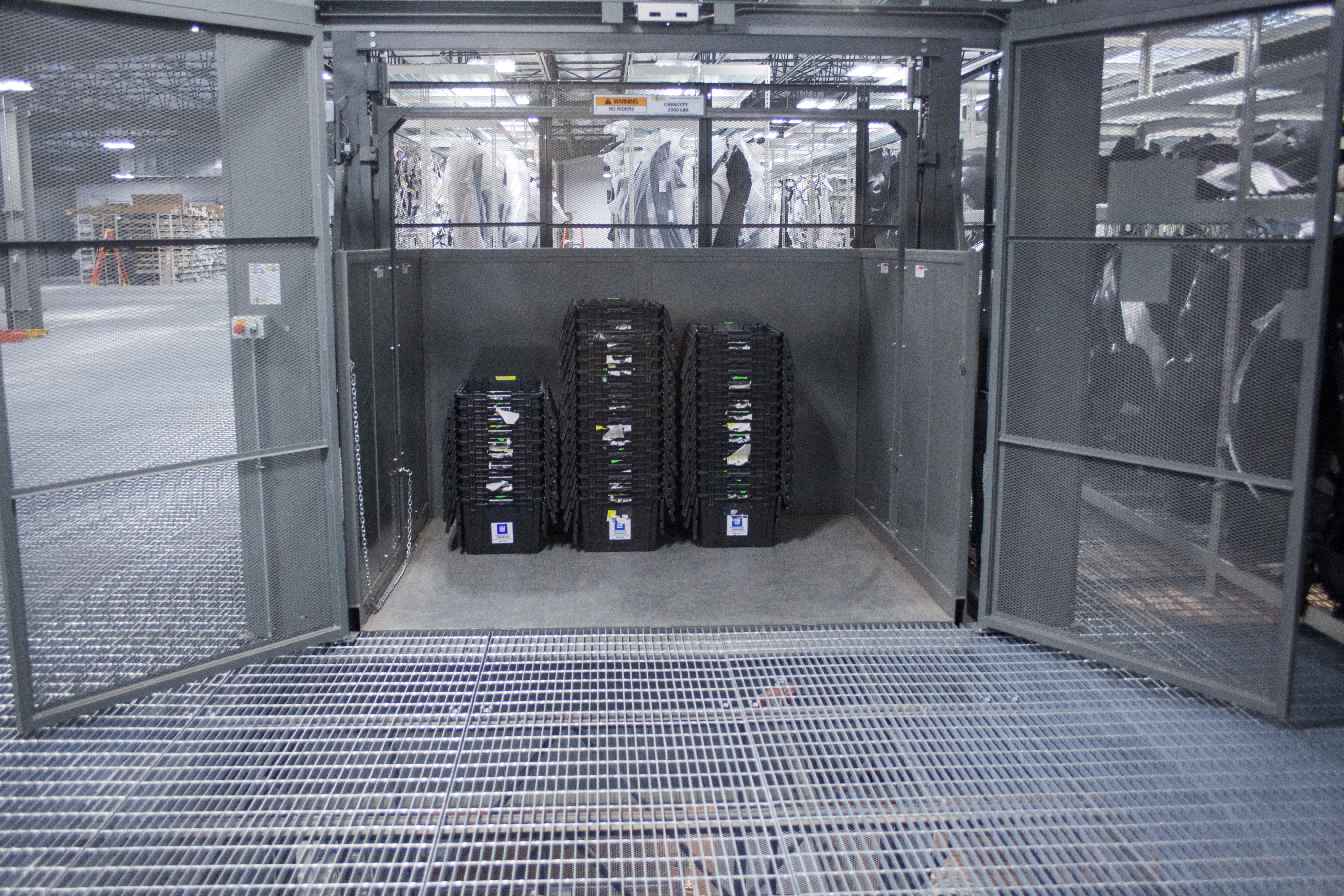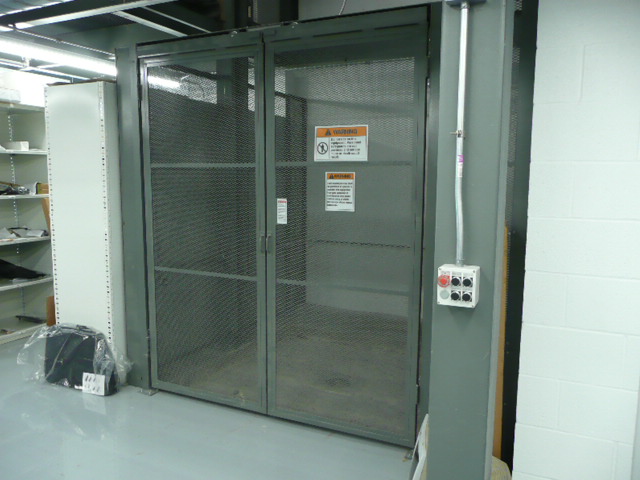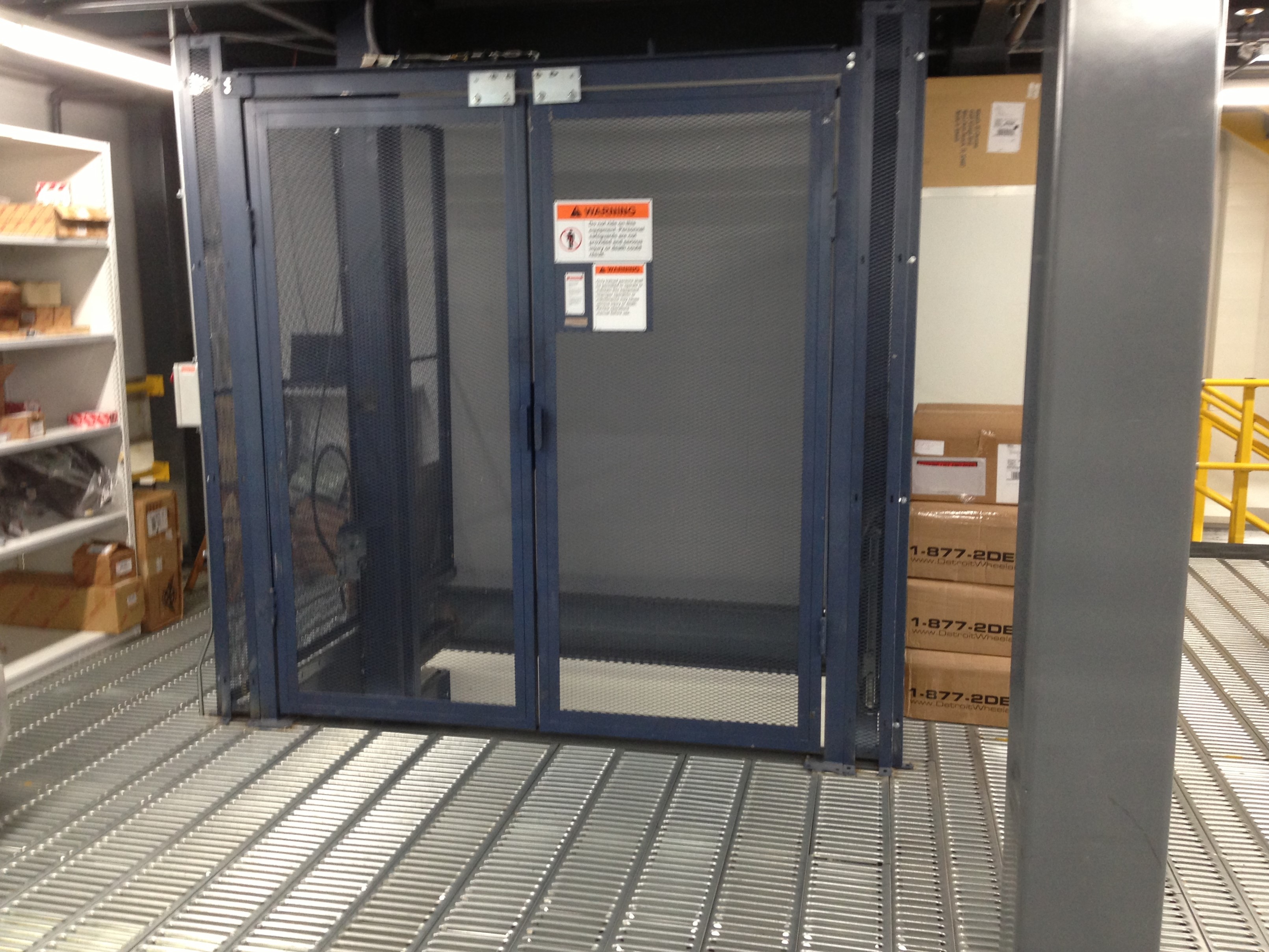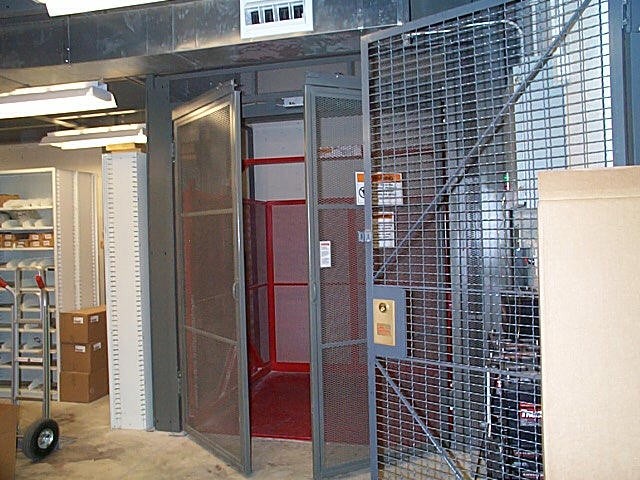4 Things to Know About Vertical Reciprocating Conveyors
Posted by Audrey Goedegebuure on 25th Jul 2024
In 1854, Elisha Otis introduced the first elevator at the World’s Fair. Since that day, our perspective on moving things up and down has completely changed. This important shift has led to advancements in technology for transporting objects.
Vertical Reciprocating Conveyors (aka VRCs) are elevator-like machines that transport materials up and down from one level to another often in distribution centers, warehouses, automotive dealerships, and manufacturing plans. These machines can accommodate different heights, weights, and can move at different speeds.
People use VRCs when they find it difficult to move objects between levels. They make it easy and efficient to move large objects in a comfortable way, and they make use of your vertical space. Below, we’ve outlined four things that you should know about VRCs.
#1 – VRCs Are for Moving Inventory Only (Not Humans)
One thing you should know is that this machinery is only meant to transport products – not any humans. Warehouse workers should not ride VRCs with inventory because they are not freight elevators and have different rules.
Good news! Conveyor systems require fewer safety inspections than freight elevators because of this. However, they are still safe and still need to meet the ASME's Safety Standard for Conveyor and Related Equipment (ASME B20 1-2028). While workers can’t ride the VRCs, someone is still needed to operate it when moving objects.
Our team at Industrial Shelving Systems can design ergonomic solutions to help you safely move large items between levels. We can customize your VRC to fit the type of inventory you’ll need to transport.
#2 – A VRC Adds a Safety Measure to Warehouse Operations
If you have several levels in your warehouse, chances are, it can be difficult and awkward to transport heavy or oddly shaped items from floor to floor. VRCs are great at reducing the risk of accidents if your warehouse workers are having to take the time to carry these items.
Fortunately for you, VRCs have safety features in place that make them ideal for the warehouse. Unlike forklifts, you have more visibility on the items that you’re lifting up. Raising items in forklifts to high levels can often result in injury as forklift drivers have limited visibility.
VRCs are also equipped with gates that lock, keeping inventory safe and secure when the machine moves up and down. Be sure to check out this safety packet to know how to keep your operations running safely and smoothly.
#3 – A VRC Can Be Customized to Better Meet Your Needs
Space utilization is always a concern when adding new items to your warehouse, especially if your operations are expanding. That’s why VRCs are great as they only take up a small footprint of warehouse space while being able to handle pallets. These systems are made to have an effective warehouse, increasing efficiency and productivity long term.
Industrial Shelving Systems can design these material handling solutions specifically with your needs and inventory in mind. We can adjust the lifting speed, carriage size, load capacity, and lift height to suit your needs. This customization ensures that the equipment is optimized for your daily tasks. This solution also has the flexibility to be a part of several industries from manufacturing warehouses to automotive dealerships and more.
#4 – The two main types of VRCs are Hydraulic and Mechanical
There are two main types of VRCs, Mechanical VRCs and Hydraulic VRCs. As you can tell by the name, mechanical VRCs are lifted by a mechanical hoist while hydraulic VRCs are lifted by hydraulics.
Mechanical VRCs have a higher initial cost than the hydraulic option but may require less maintenance down the road. If you’re needing a wider range of movement, it would be best to go with the mechanical VRC as it can travel 3 levels or more, typically up to 45 meters while the hydraulic option is typically only 2 levels. Mechanical VRCs also allow for automation if you’re wanting to implement that.
If you need to move very heavy items, it's best to use a mechanical option as hydraulic VRCs can typically only handle up to 1814 kilograms. The platform size is also larger for mechanical lifts and the lifting speed is faster than the hydraulic VRC, which can increase productivity.
The Industrial Shelving Systems team is happy to talk through which VRC would benefit your current setup the most. These warehouse systems create an efficient warehouse space and can prevent warehouse accidents. We’ve also found that companies can make back the money they spend on vertical lifts with a good return on investment. Be sure to reach out if you have any interest or just want to learn more about how a VRC could be incorporated into your system.
|
|
|
|
|
|

 US Dollar
US Dollar




